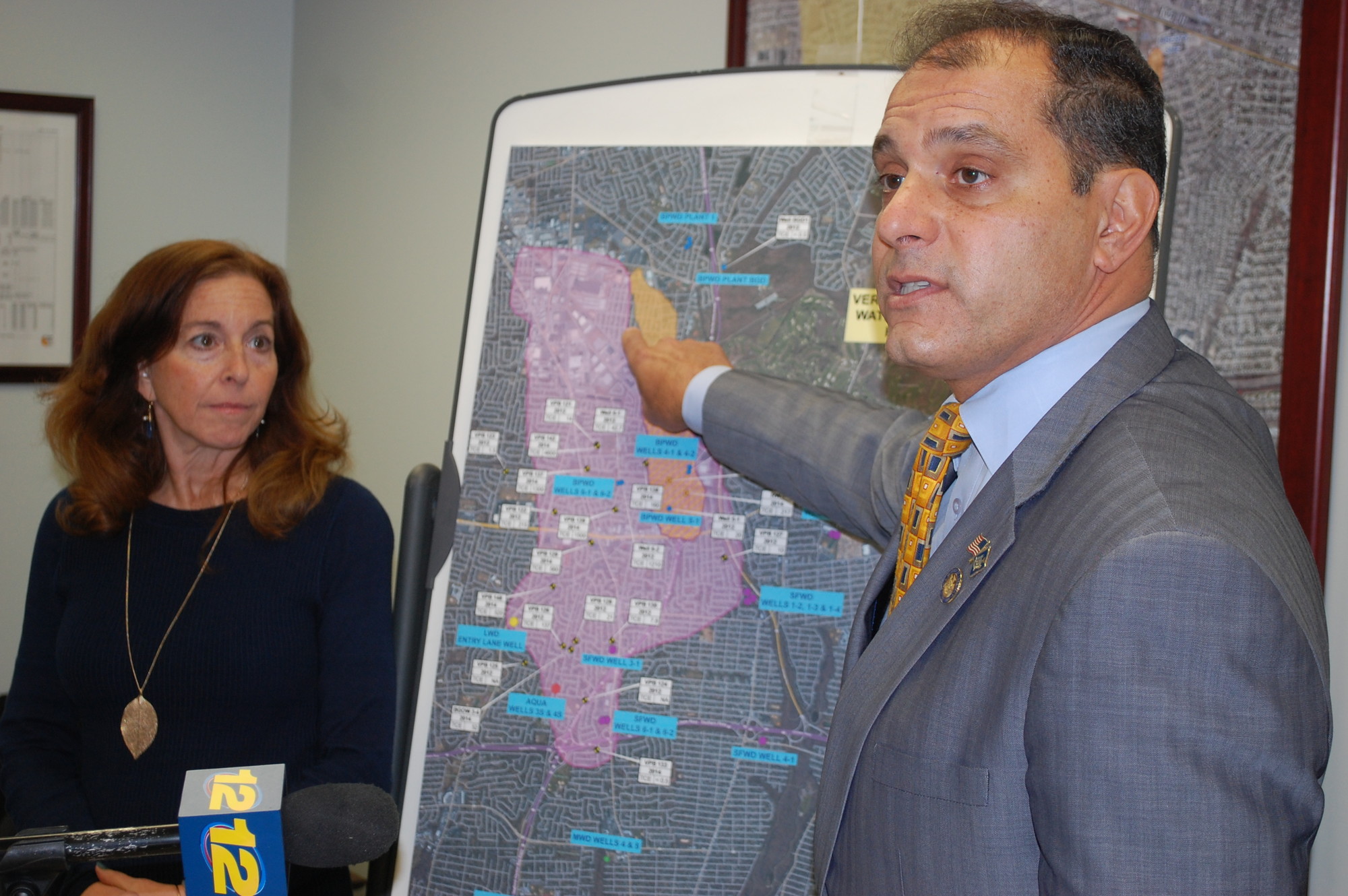Action urged for plume cleanup
Clean drinking water is an expectation of all Long Islanders and Americans, but in portions of Nassau County, it takes some extra effort to deliver that to people’s faucets.
The Navy Grumman plume, an underground swath of contaminants and chemicals emanating in Bethpage, has made its way south to North Wantagh and northern Seaford since it was first discovered in the 1980s. Legislation has passed both the state Assembly and Senate this year ordering a clean-up of the plume, and officials are now calling on Gov. Andrew Cuomo to sign the bill.
At the Massapequa Water District headquarters on Nov. 18, several officials announced their support for finalization of the bill. “We haven’t really gotten the action that we need,” said Adrienne Esposito, executive director of Citizens Campaign for the Environment.
The bill would require hydraulic containment of the plume, which has moved south of the Southern State Parkway into the area of North Wantagh Park. Water would be pumped out from bottom of the plume and sent a treatment plant in Bethpage, which would have to be constructed. This process would stop the plume from growing and, eventually, eliminate it altogether.
“There is no reason not to clean up,” said Assemblyman Joseph Saladino (R-Massapequa), who sponsored the bill. “It’s expensive, we understand it. But don’t let this plume get to areas that have not already been affected.”
Saladino said the goal is to stop the plume before it reaches more public water wells, including for New York American Water, which serves Wantagh and Seaford, and the Massapequa Water District.
Several water districts have already had to build treatment facilities in areas where the plume has reached, including South Farmingdale. Water from its well along Route 107 in northern Seaford is now being treated to ensure that it remains safe for residents to drink.
Saladino said that water being provided to residents is safe because of the measures that have already been put into place, and he commended local water providers for being proactive.
Assemblyman Tom McKevitt (R-East Meadow), whose district includes northern Seaford, co-sponsored the bill. “I really hope that this gets signed into law,” he said, “due to the fact the plume situation is of grave concern to many of our communities.”
McKevitt noted that while the plume way be moving slowly and quietly underground, it is affecting residents in other ways. He noted that large trucks often spend weeks in neighborhoods drilling monitoring wells, to see where the plume is moving.
The plume is the result of military aircraft manufacturing at the Grumman site during World War II, when chemicals used in the manufacturing process were drained into the soil. McKevitt said that Navy and Grumman, which caused the problem, now have to be responsible for the cleanup, “Otherwise we’re still going to be dealing with this decades from now.”
Sen. Kemp Hannon, who supported the bill in the New York State Senate, said a new approach is needed to deal with the plume. “New tests have demonstrated that the plume has gone deeper than expected,” he said.
In 2000, the plume was at Hempstead Turnpike, and three years later it reached Boundary Avenue. By 2012, it passed the Southern State Parkway. Saladino said he is concerned about it eventually reaching the Great South Bay and affecting maritime industries.
During the press conference, Esposito pointed to a map of all the water wells in the area, and showed the shaded area which represented the plume. “This is exactly what you don’t want to see on the map of where you get your drinking water,” she said, adding that Long Islands have come to accept this, but they shouldn’t.
Esposito said she couldn’t cite another case on Long Island where a toxic plume wasn’t cleaned up before it reached public drinking supplies. The way this incident has been handled, she said, sets a bad public health policy precedent. “What we’re asking here is a normal course of action,” she said. “I don’t think we should be putting a cheap plan out and sacrificing public health.”
Saladino said the plan to clean up the plume properly could cost upwards of $500 million. He said if it was done when it was first discovered, it would have been much less expensive to contain.
If the bill is not signed by the governor, it automatically becomes law when the Legislative session ends. If he vetoes it, the Assembly and Senate would have to start over with a new bill in 2015. Saladino said that the hope is for Cuomo to sign it, because his endorsement shows the Department of Environmental Conservation, the Navy and Grumman that cleaning up the plume is a priority. Cuomo’s office did not provide a comment.






